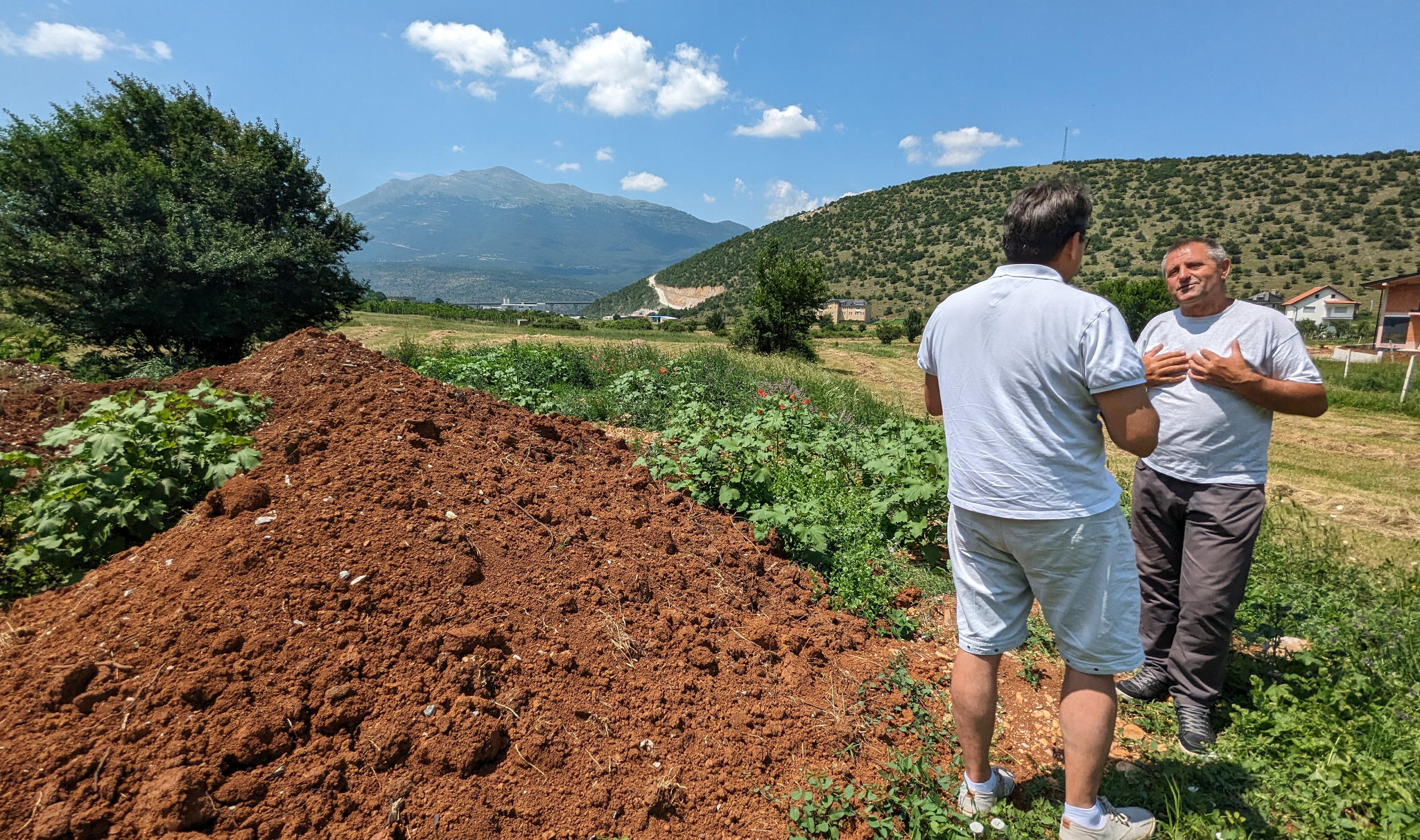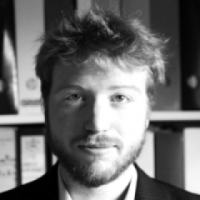ZHUR, KOSOVO – A convoy of Mercedes with tinted windows speeds down the motorway as drivers rush to cross the border – a gateway to Albania’s stunning Mediterranean beaches. Resisting the temptation to join the sunbathers, I turn off half a mile from the frontier and take a winding mountain road for ten minutes, driving past a glistening lake until I reach a sleepy village.
Jutting up from the roadside are tattered American and NATO flags around a camouflaged stone column bearing the twin headed eagle emblem of the Kosovo Liberation Army (KLA). The rebel movement took the territory nearly a quarter century ago, after US jets pummelled Serb soldiers on the surrounding Ceja mountain with at least 286 rounds of depleted uranium – a chemically toxic and radioactive heavy metal made from nuclear waste.
Such airstrikes were repeated all across the border zone in 1999, driving the Serb-dominated Yugoslav army out of Kosovo within 78 days. Bill Clinton and Tony Blair relished the victory, basking in their newfound popularity. Roads and children would bear their names, spelt locally as Klinton and Tonibler. But this “humanitarian intervention” – designed to protect Kosovar Albanians from ethnic cleansing – has left a bitter legacy in the very communities it was meant to save.
“We have 20 to 30 people a year with cancer here.”
Sipping a macchiato at a roadside cafe opposite the KLA monument, Adil is pleasantly surprised when he hears a journalist has come to ask about cancer in the village. “My father has just died from it,” he tells my translator, as he gladly pays for our drinks. “We have 20 to 30 people a year with cancer here.”
Without prompting, he links the illnesses to weapons used in the war. “We had so many bombs dropped here because we are near the border. A small bomb infects the whole surrounding area.” When told Britain is sending depleted uranium tank shells to Ukraine, Adil exclaims: “I feel sorry for them. I wouldn’t want anyone to experience it.”
Our conversation arouses interest from KLA veterans at the cafe. One of them, who normally works abroad, volunteers to show us a bomb crater. The others fear reprisals if they publicly criticise NATO. Their small country, about half the size of Wales, still depends on the US-led alliance for security against Serbia, which refuses to recognise Kosovo’s independence.
Jumping in my rented Vauxhall Corsa, we gingerly head off road through several fields to a heap of soil sprinkled with wild flowers. “This is one of the spots that was hit six times with depleted uranium,” the veteran informs us. “The crater was five or six metres deep and seven metres wide. We brought healthy soil to put on top, in order to reduce radiation for the people.”
Despite a warning from a Danish NGO, villagers were growing vegetables in the vicinity. The veteran puts the number of local cancer cases even higher than Adil – claiming there are 50-60 patients in the village, many of them young people.
At the last census in 2011, Zhur had a population of under 6,000 – suggesting a cancer rate of around 1%. That would be three times the worst rate in the European Union. The veteran had likely made an overestimate, but I was to hear similar disturbing stories throughout this former conflict zone.
Hidden hazards
NATO’s use of depleted uranium (DU) in Kosovo was not confirmed until the year after the war, amid panic over ‘Balkan syndrome’. Italian peacekeepers who took over many of the bombed out Yugoslav army bases were going down with leukaemia.
In March 2000, NATO’s chief, Labour peer George Robertson, belatedly told the UN’s Kofi Annan that “approximately 31,000 rounds” of DU had been fired “throughout Kosovo during approximately 100 missions”. He said the weapon was deployed “whenever the A-10 engaged armour”, referring to the US air force’s Warthog ‘tankbuster’.
One of the most powerful aircraft ever built, the Warthog’s giant gatling gun can fire a blizzard of 30mm bullets with ultra-dense depleted uranium cores, knocking out tanks in seconds. But its speed is superior to its accuracy. Typically, 90% of rounds miss the target. They spread out over 500 square metres, burying several metres into soft ground.
Upon impact, the rounds partially vaporise and produce a dust that is dangerous for those nearby to inhale, posing a risk to surviving Serb soldiers, local communities and incoming peacekeepers.
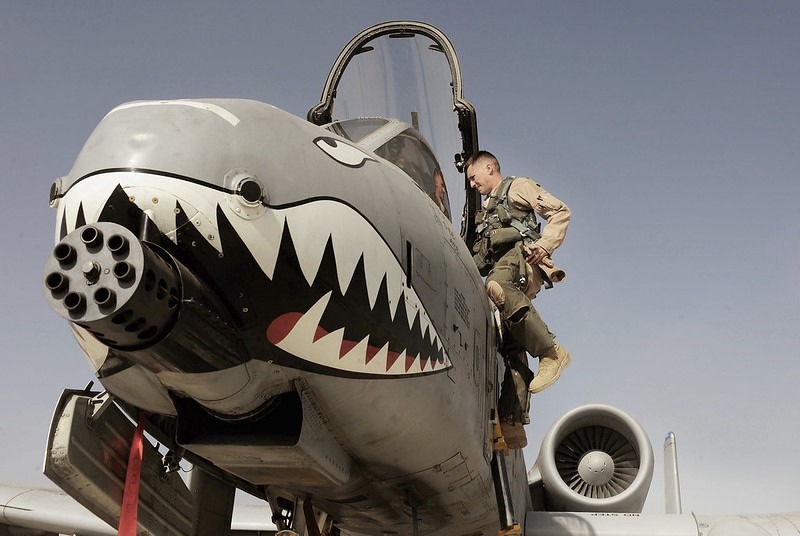
Lord Robertson’s admission that the weapon was used paved the way for the United Nations Environmental Programme (UNEP) and World Health Organisation (WHO) to inspect target sites – although scientists struggled to find them.
After months of intense internal chicanery over obtaining more accurate maps, they spent 24 days during 2000-1 surveying Kosovo for the twin threat posed by DU: radiation and heavy metal toxicity – which could cause cancer or birth defects.
Much hinged on their findings. A negative outcome would undermine NATO’s humanitarian credentials and hamper the return of refugees from their temporary asylum in western Europe.
Ultimately, their reports were fairly inconclusive. When the WHO came to where I was now in Zhur and the Ceja mountain, they found the “precise location of the targeted site was difficult to pinpoint since access was restricted due to the presence of unexploded cluster bombs” – another controversial weapon dropped by NATO.
This meant scientists were only able to study an area in which they found just two out of nearly 300 rounds of the depleted uranium ammunition fired here. Based on tests of this small sample, the UNEP dismissed any radiation risk but said “from a toxicological point of view the exposure might be significant.”
The experts lamented: “It is unsatisfactory that the risk cannot be assessed quantitatively because the targeted area could not be investigated in its entirety” and warned “it would be prudent to complete the investigation after the area has been made safe.”
Judging by the agricultural approach towards the blast craters that I found in Zhur, there has been no follow up survey. The UNEP’s press office confirmed to me their organisation had never returned to the site, despite their own recommendation, nor has it done any long term monitoring of the community’s health.
The NATO public affairs office in Kosovo also could not confirm it had followed up on UNEP’s recommendation to reinspect Zhur. Instead, the Atlantic alliance seized on some United Nations documents that suggested “sites with depleted uranium pose no significant health risks to the population”.
NATO told me: “This is the scientific evidence. And it has been consistent.” Yet many of these same reports urge precaution and long term monitoring – something those concerned with “scientific evidence” would surely be keen to undertake?
William Walker road
Hoping that Zhur’s cancer crisis is a one off, I drove ten minutes down William Walker road – named after a US diplomat who paved the way for NATO’s bombing campaign – towards the mediaeval Ottoman city of Prizren.
Turning off at Rikavac roundabout opposite Kosovo’s answer to B&Q, I parked up on a derelict forecourt that looked like a graveyard for broken down trucks. It was deserted apart from a young man selling watermelons from the back of his orange flapped lorry. He was blissfully ignorant that in the space of a week in June 1999, more than 500 depleted uranium rounds were fired in this location.
The only signs of the war were three crumbling concrete walls that resembled a bombed out Serb barracks. As I stood near the site, a passerby pulled over to talk. Despite being unaware of what was fired here, he explained that 20-30 people a year were dying from cancer in his nearby village. “The state of Kosovo isn’t doing anything to help the community,” he complained, before driving away.
“This happens every time I visit a site where NATO fired depleted uranium,” my interpreter Dzafer Buzoli commented. “In all the villages nearby people will tell you about a high rate of rare cancers.”
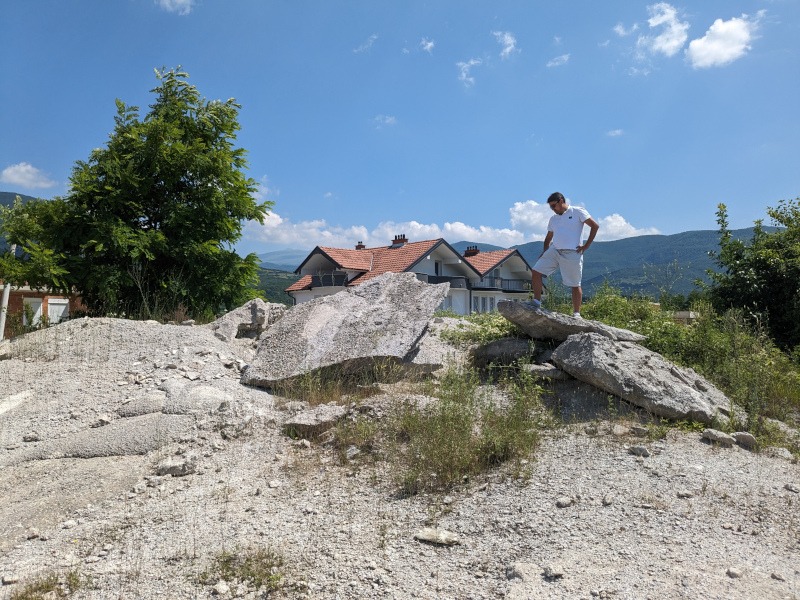
Buzoli has worked for many of the international NGOs that descended on Kosovo after the war, from the Red Cross to Norwegian Church Aid.
Importantly, he is not from either side of the country’s ethnic conflict. Speaking both Serbian and Albanian, Buzoli is from the Roma minority and was heavily involved in resettling Roma refugees who the UN housed near a former lead mine, a scandal which saw hundreds of people poisoned.
He fears depleted uranium is the next tragedy for Kosovo, ever since his mother died in 2015 from a short battle with cancer aged 52. Buzoli turned to their local oncologist for answers. “He told me very informally it was because of what they had thrown at us during the war,” alluding to depleted uranium.
The doctor then emigrated from Kosovo, concerned for his family’s health.
“I asked myself what this is all about, knowing the Balkans has hard smokers and lignite power plants near our capital,” Buzoli recalled. Two sites on the outskirts of Pristina provide 97% of Kosovo’s electricity by burning ‘brown coal’, creating among the worst sources of air pollution in Europe. After spending just five days in the country, my lungs felt noticeably worse.
But Buzoli believes lignite is not the gravest health risk. “The power plants were operating at full capacity before the war and we never had this number of cancers,” he insists. “I believe depleted uranium is the cause. When you read about how hard it is for the population in Kosovo, southern Serbia and northern Albania – all these towns near the border where the weapon was fired have almost the same problem of high cancer.”
“In all the villages nearby people will tell you about a high rate of rare cancers”
Reliable statistics are hard to obtain as Kosovo’s cancer registry was disrupted for a decade after the war, meaning there’s no accurate data from a crucial time period. The most recent official figures are from 2021 when there were 2,991 cancer patients out of a population of 1,773,971. That would suggest a cancer rate of around 0.17%, which is on par with the global average.
However, these figures do not record cancer cases in Kosovo’s ten municipalities with a Serb majority, which boycott Pristina’s healthcare system. When the population of those municipalities is removed from the total, the cancer rate is slightly higher – at 0.18% – but still not exceptional.
The director of Kosovo’s main oncology clinic in Pristina, Dr Ilir Kurtishi, warned last month that 890 new cases of cancer had been detected already this year, which local media described as “alarming”. Kurtishi was not at the clinic when I called by and did not answer questions I sent him via email. Kosovo’s health minister, Dr Arben Vitia, did not respond to a request for an interview.
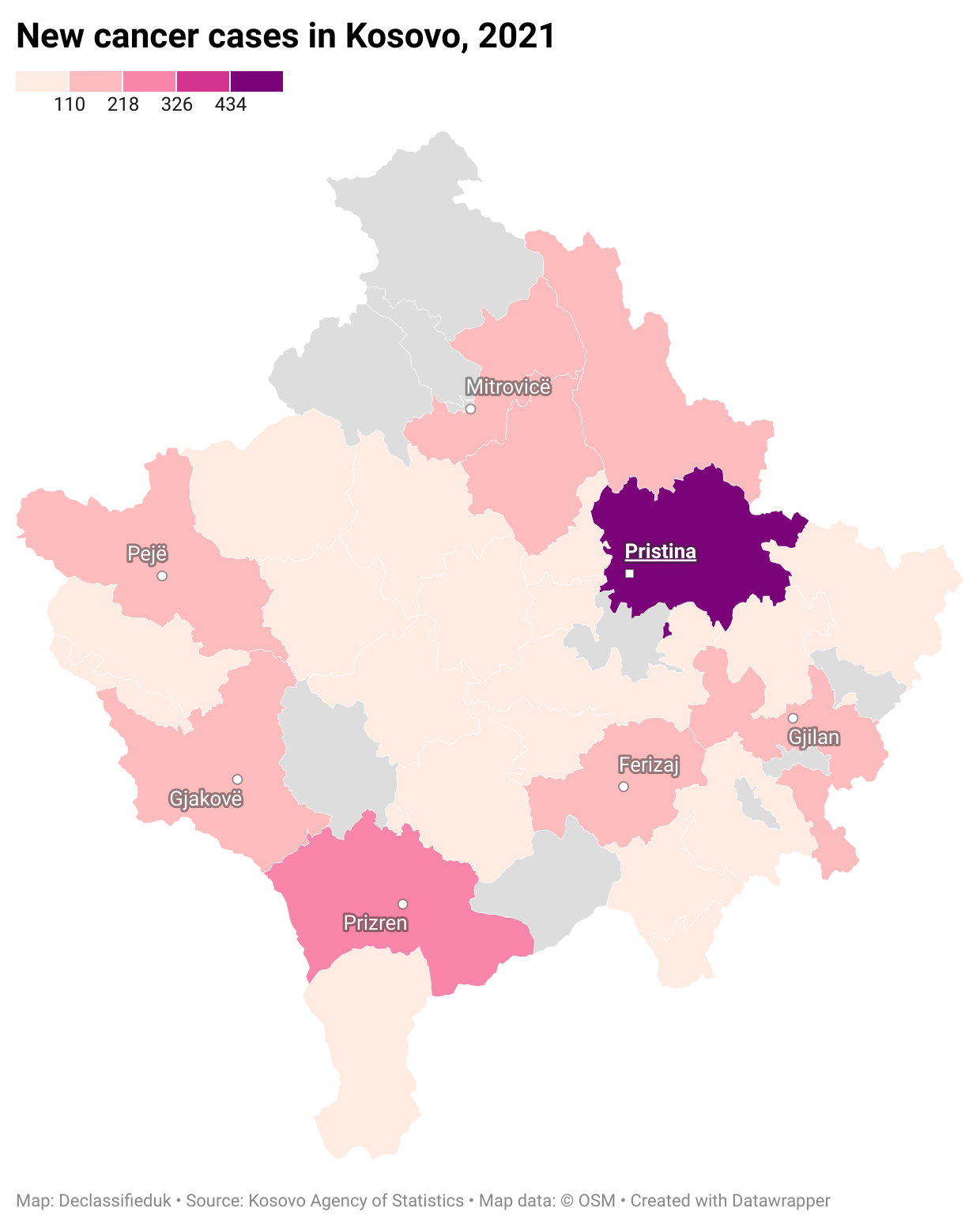
A breakdown by village is not available, preventing a precise comparison with somewhere like Zhur. When mapped by municipality, Pristina has the highest number of cancer cases in the country – perhaps due to the lignite plants. Zhur falls under the area of Prizren, which has some of Kosovo’s cleanest air, and yet the second highest number of cancer cases – although when adjusted for population size, Prizren’s cancer rate is below average.
Buzoli believes many people simply don’t report their tumours to national health authorities, and instead seek alternative therapies. He said there’s a regular queue at a fountain in Albania where Kosovars believe the drinking water is particularly pure.
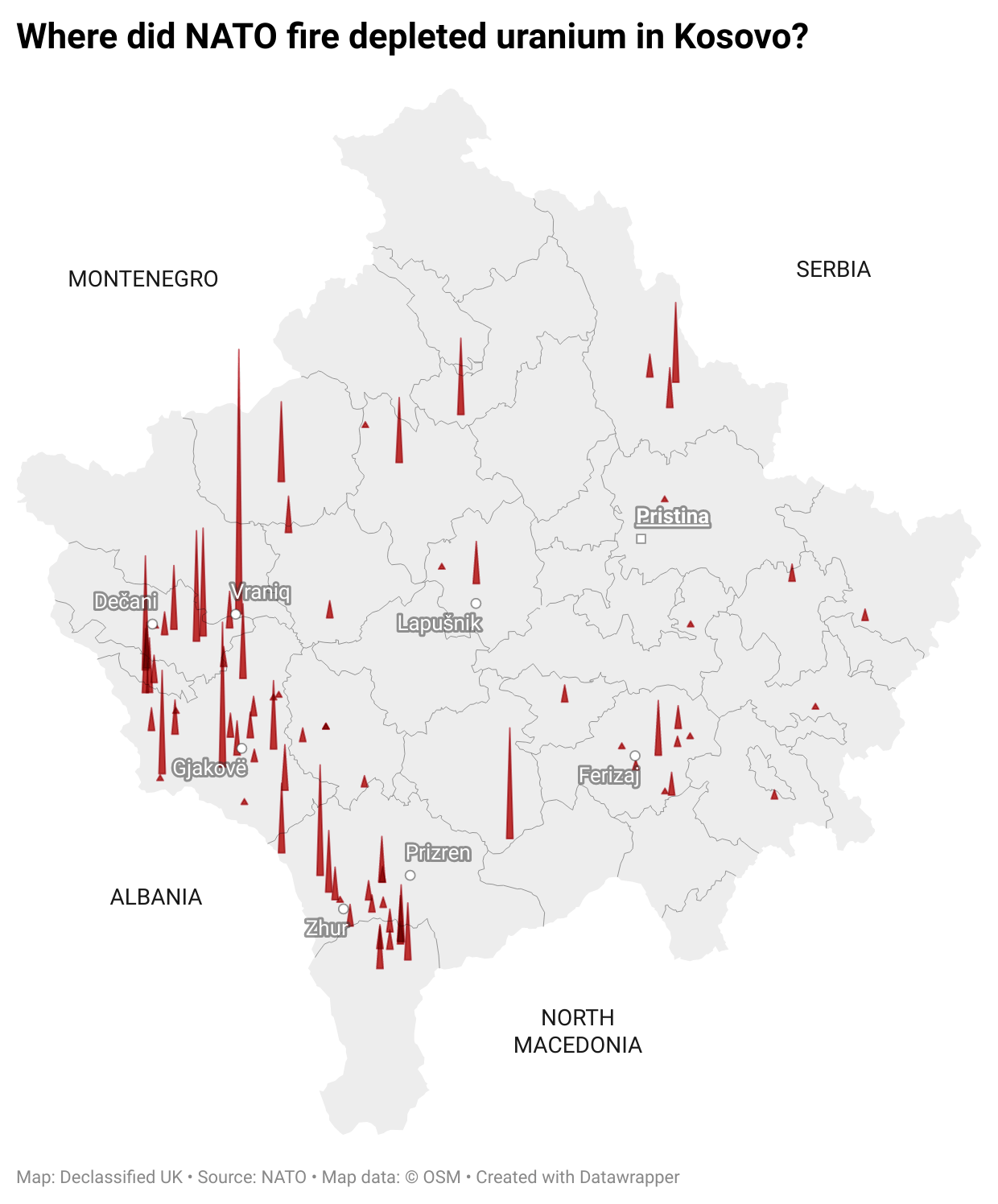
Drenica Valley
The day after visiting Zhur I headed west out of Pristina, leaving Bill Clinton Boulevard behind in exchange for the Drenica Valley. Flanked with forests, this KLA stronghold saw some of the fiercest fighting and earliest rebel victories. After an hour I turned off in the village of Llapushnik, which the KLA liberated from the Yugoslav army a full year before NATO intervened.
Winding through the village, whose main street is named after the rebel movement, I searched in vain for the spot where NATO fired 370 rounds of depleted uranium in June 1999. The map took me into the middle of some fields being used to grow corn.
Britain’s Ministry of Defence, which also tried to find the site, noted the NATO grid references were only accurate to “plus or minus one nautical mile” (1,852 metres). Dejected, I returned to the main road and stopped in a cafe adorned with KLA memorabilia.
Its proprietor, Migjenii, welcomed me inside. I was a little apprehensive. The WHO report said “almost all” ethnic Albanian medics they met in 2001 believed concerns about depleted uranium “were politically motivated and fuelled by those who were against the NATO intervention.”
But Migjenii was visibly relieved to hear someone was investigating cancer cases, just like the people I had met 30 miles away in Zhur. “My father was in the KLA,” he explained, plying me with free coffee. “I was six in 1999 and still remember everything. NATO fired cluster bombs from the sky. Some of the biggest battles with the Serb army were here.”
While proud of his neighbourhood’s rebel past, he was worried about their future health. “My best friend’s mum died last year from a rare lung cancer. She was 56.”
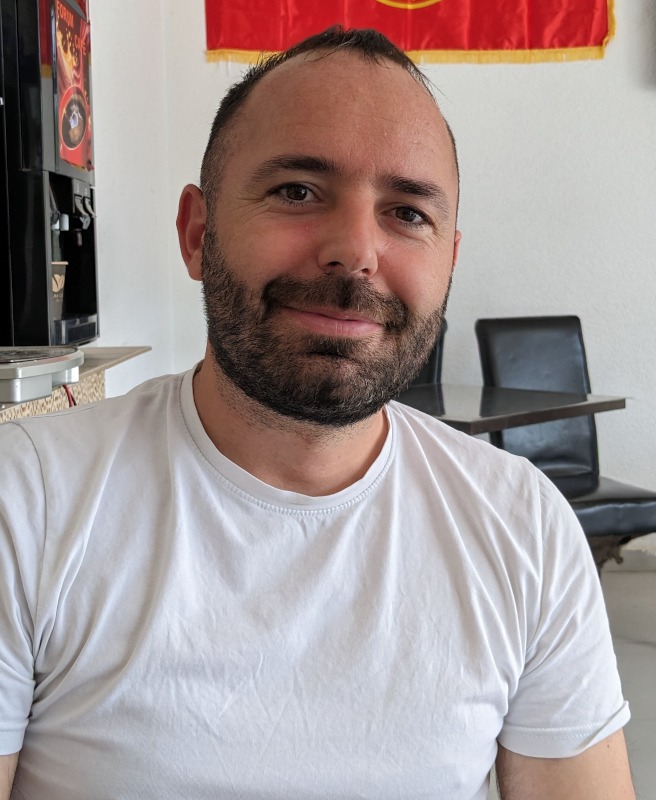
Migjenii continued to unburden: “My sister’s school friend, Labinot, died from a rare diagnosis when he was in his late 20s. And one of my relative’s wife was diagnosed with cancer five months after giving birth.
“I think more and more young people have a problem with rare diseases but the government doesn’t care about it. It’s good you are exploring this issue because we need help from other places.
“Why is cancer spreading so fast?” He asked, before offering his own answers: “This is from the war, the uranium bombs – and probably the water we buy from Serbia,” he mentioned for good measure.
Despite his community fighting so hard to liberate Kosovo, Migjenii lamented the cost of healthcare provided by his government. In communist Yugoslavia, medical treatment was free. But in capitalist Kosovo, chemotherapy is often prohibitively expensive (unless you are one of the few remaining Serbs, whose healthcare is subsidised from Belgrade).
The main clinic in Pristina is a cramped, wedge shaped, double-storey building with blue windows and grubby concrete facade. Money is so tight that when the hospital’s kitchen was renovated last year, it was funded with US military aid.
Migjenii’s friends and family face bills of hundreds of euros for simple appointments, with full treatments running into tens of thousands. They are often told to travel abroad to seek remedies at private clinics where he believes Kosovar doctors earn commission for referrals.
‘Gift that keeps giving’
Parting ways with Migjenii, I drove deeper into the Drenica valley, passing cemetery after cemetery of fallen KLA fighters with elaborate murals or mosques. Eventually I reached the steep slopes around Vraniq, where an estimated 600 kilos of depleted uranium are embedded into a sandy glacial ridge 30 metres above the village.
In June 1999, the US fired more than 2,320 depleted uranium rounds at Serb anti-aircraft batteries on the hill top. When the UN visited nearly 18 months on, their lichen sample did find “clear indications of DU contamination”.
However, they failed to locate any of the ammunition – suggesting it must have burrowed into the soft ground. The scientists suspected “some penetrators ricocheted and came to rest hundreds (or even thousands) of metres away from the top of the hill.”
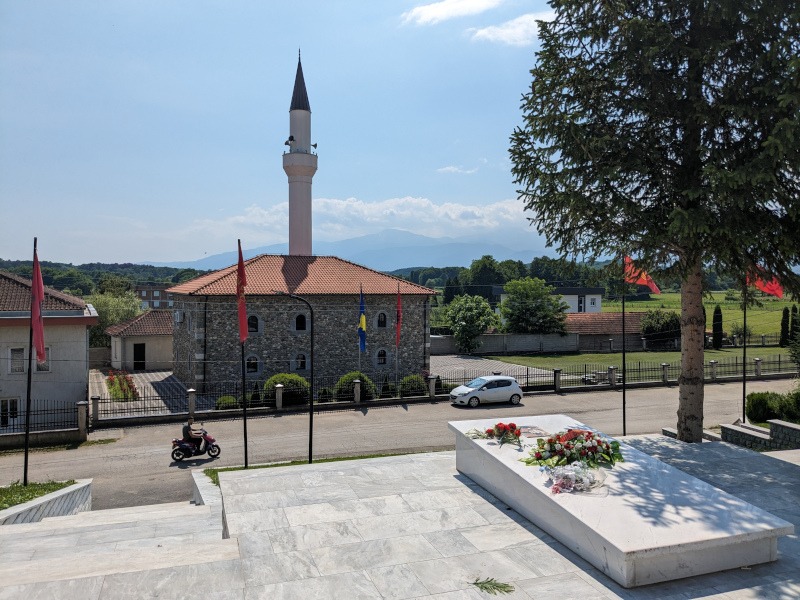
I scrambled half way up the ridge, avoiding sections where it looks like a recent landslide occurred. The view was spectacular, panning across to the carefully ploughed fields below. It dawned on me that like in Llapushnik and Zhur, many areas NATO liberated with depleted uranium are where Kosovo now relies upon to grow its food.
The irony of this was pointed out to me later in the day when I visited Decani, a Serb Orthodox monastery in the west of Kosovo surrounded by KLA heartlands. Guarded by Italian peacekeepers to protect it from attack by Albanian arsonists, the UNESCO site has survived since the 14th century.
It had a narrow escape in 1999 when NATO fired an unknown number of depleted uranium rounds at targets about half a mile up the hill from the monastery.
Inside, my guide, Branko, confirmed the monks were concerned about the possible health consequences, which have featured heavily in Serbian media. “Depleted uranium is the gift that keeps giving from the US,” he noted sarcastically. “And now they’re giving it to Ukraine, one of the world’s largest exporters of wheat.”
Gjakova
Leaving the monastery’s fragile rural tranquillity, I meandered south to the city of Gjakova, parking near St Paul’s catholic church with its tall twin spires. Just down the road is a grubby concrete yard used by cheap car washes, tire shops and a disused motor racing track.
An arch-shaped bunker is the only reminder that this was once a Serb garrison and ammunition depot, where NATO fired 300 rounds of depleted uranium.
The WHO said it was “a few hundred metres from the regional hospital and close to the last houses at the end of town. The area was totally destroyed and heavily bombed…There were (and are) people living close to this site. Of all the sites visited this is the one closest to a large populated area.”
Italian peacekeepers had conducted extensive demolition work there after the war, before discovering DU rounds in the wreckage. In the decades since, hundreds of Italian veterans who served in Kosovo have successfully sued their defence ministry for cancers their courts accepted were linked to DU exposure in the Balkans.
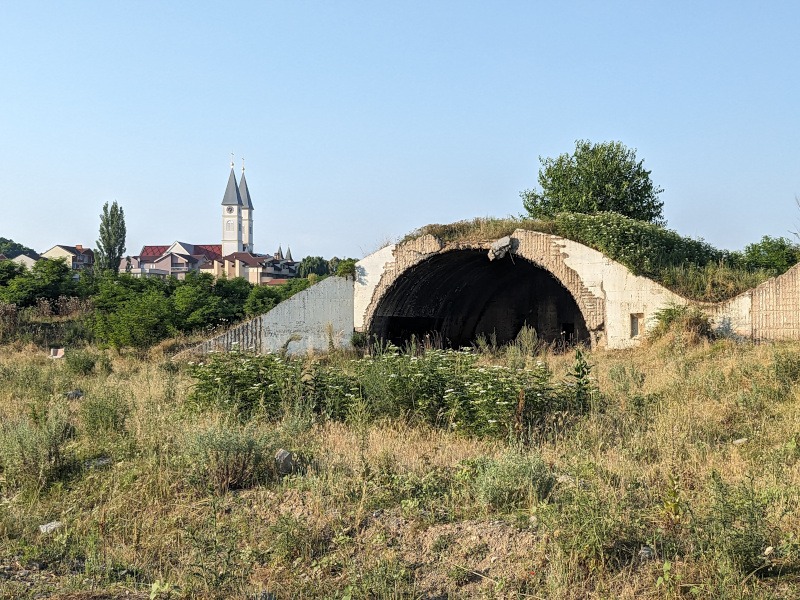
But sitting in a pizza restaurant opposite, the teenage waiters have no idea what happened there in the war. That’s despite the UNEP warning in 2001 “it is advisable to inform people about the possible presence of [DU] penetrators” in case children pick them up as toys.
Outside, workers blast cars with pressure washers, constantly causing water to run off near the site. They seem oblivious to another recommendation in the UNEP report, that the concrete should be covered with a new layer.
This was because “many penetrators may remain hidden in the ground and therefore vulnerable to solution and ultimate dispersal into the groundwater”, creating a risk that “drinking water from some nearby wells could become contaminated in the future”.
“Drinking water from some nearby wells could become contaminated in the future”
The International Campaign to Ban Uranium Weapons (ICBUW), which conducted its own study in the Balkans, said “sites may require ongoing testing of groundwater”, warning that “estimates of how long this may need to be done run into centuries”.
The group believes “no systematic decontamination has been undertaken on any sites in Kosovo”. Even if authorities in Pristina wanted to embark on that route, they may struggle to afford it.
In neighbouring Montenegro, where NATO fired depleted uranium at just one site, the clean up costs are daunting. To decontaminate 480 rounds, which took just 12 seconds to fire, Montenegro spent over a quarter of a million US dollars and devoted 5,000 working person days.
Kosovo has more than 100 such sites.
Radoniq
Six miles north of Gjakova lies Lake Radoniq, a vast reservoir that supplies drinking water for the city and many of southern Kosovo’s 200,000 inhabitants. Yet even this breathtakingly beautiful location was not spared from attack with depleted uranium.
On 7 June 1999, the US fired 655 rounds near its dam, apparently targeting Serb artillery dug into a ridge and a radio mast. When the UNEP went there, they could only recover a single round, noting the “more probable scenario that most of the penetrators are hidden in the ground means that drinking water could possibly become contaminated in the future.”
However, they felt the volume of water in the lake would dilute the uranium enough to make contamination insignificant. Hopefully they are right, because when I visited there was a luxury waterfront hotel built right on top of where the airstrike occurred.
A tourist couple from the Gulf with a young baby parked up next to me and took selfies as the sun began to set. Rather than ruin their holiday with questions about DU, I left them in peace and headed back to Pristina before it got too dark to drive safely on Kosovo’s precarious roads.
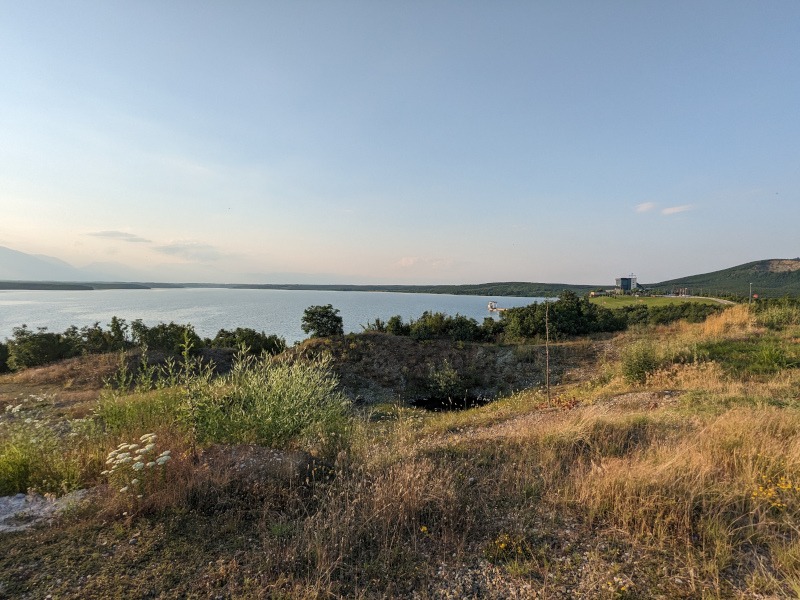
Ferizaj
No trip to Kosovo is complete without meeting admirers of Tony Blair. To maximise my chances, one day I headed to Ferizaj, a city south of Pristina where a road is named in his honour. For good measure, the local council upgraded the street to a square.
I fully intended to pay my respects to New Labour’s supremo, but Buzoli suggested a more serious sightseeing spot. This was ten minutes drive east of Tony Blair street/square, where our map of airstrikes suggested NATO unleashed 480 rounds of DU in May 1999.
Today it’s a petrol station, school and plumbing shop. The plumber’s merchant, Bahri Hyseni, who also works as a building inspector, welcomed us inside. He spent the war sheltering in Manchester and is eternally grateful to England, asking me to convey his good wishes – not least to our former prime minister.
But Bahri was suspicious about the conflict’s legacy on local health. “My uncle recently died from a six month battle with lung cancer. He was 67 and quit smoking 15 years ago,” he conveyed. “A teacher at the school has just died from lung cancer. They were 64.”
Bahri estimated that in the last year, his village of around 400 families had lost 12 to 13 people to cancer. While the numbers might not seem exceptional, he worried there could be a connection with depleted uranium.
“NATO knew people lived here”
“NATO knew people lived here,” he pointed out. “Why would they destroy the country and leave people with cancer so long afterwards? Why did they choose Kosovo and not Belgrade?”
Although the US did fire some depleted uranium in Serbia, it was all dropped along the southern border with Kosovo and never in the capital. As a result, Kosovo accounts for the vast majority of DU fired in the Balkans.
“It was better not for NATO to intervene,” Bahri insisted, remarkably. “We would have had more casualties from gun fights, but after the war we would have had fewer people with cancer. Most of us won’t be able to live beyond 60 due to the health conditions and stress from war we lived under.
“Many young people have died from heart attacks and the families didn’t do autopsies to see what the underlying cause of death was. If they did, they might have found some were due to depleted uranium.”
He is also suspicious of what Serb doctors did to ethnic Albanian patients in 1990, finding an archive newsclip on YouTube showing children suffering from poisoning in a hospital ward. “Imagine nine years later NATO bombed us with depleted uranium. It will take decades for our health to recover.”
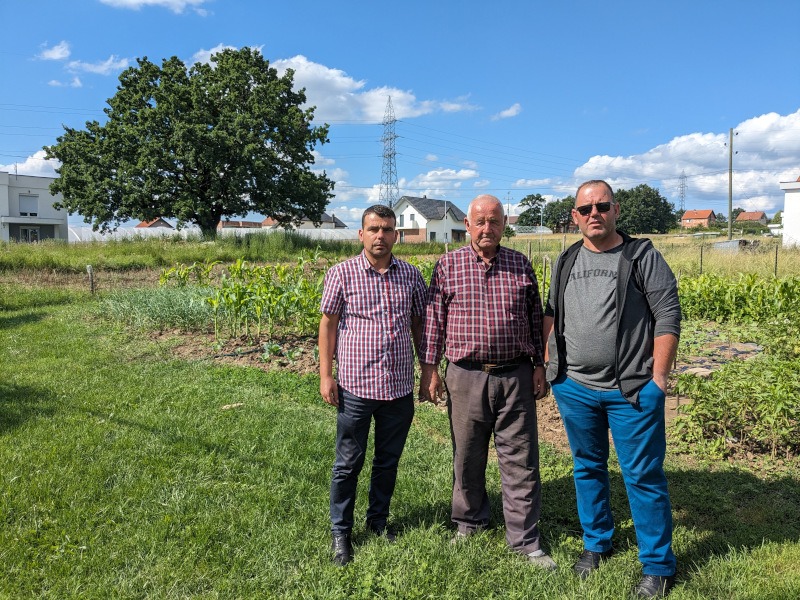
Keen to show us exactly where the weapon was used, Bahri calls the Hyseni family who live behind his shop. Raif, Hafez and their elderly father Ismet escorted us onto their property. “We fled to another village during the war,” Ismet explained. “When we came back, we found Serb soldiers had slept in our houses.”
The Yugoslav army stationed tanks in the fields between their homes, making them a prime target for the Warthog’s depleted uranium. As I admired his flourishing vegetable patch, Ismet let slip: “This is the spot where NATO fired. I’m very surprised to hear what type of weapon was used in my garden. But fortunately my family haven’t suffered from cancer. I don’t know about other people in the village.”
Such anecdotal evidence is all I had to go on. This site in Ferizaj – marked as target 57 on the NATO strike list – was never inspected by the World Health Organisation or UNEP, which only examined 11 out of around 100 sites in Kosovo where depleted uranium had been fired.
But at least one prestigious person had visited the area, Raif proudly assured me. It had been graced by Tony Blair on his victory lap of Kosovo.
Beau Road
If NATO really wanted to monitor the long-term impact of the weapons they fired in Kosovo, the alliance would not have to go far out of its way. A few miles from the Hyseni’s vegetable patch is the one of the largest US military bases in the world: Camp Bondsteel. Its sprawling barbed wire fences slice the horizon as far as the eye can see.
When Joe Biden called by in 2016, Kosovar authorities renamed the highway leading to the base after his late son, Beau. Meant as a tribute to Biden’s foreign policy and Beau’s stint as an attorney in Kosovo, for me it had other connotations as I drove past.
Beau served as a soldier in Iraq, where he was exposed to US military ‘burn pits’ – vast piles of smouldering trash. He died a few years later, aged 46, from an aggressive brain tumour. Biden has publicly linked his son’s death to burn pits, and passed a law last year to expand health care for millions of other veterans he believes suffer as a result.
If the US commander in chief can accept some of his military’s practices cause cancer, then why won’t he take a closer look at depleted uranium before shipping it to Ukraine?
Kosovo’s cancer cases – if connected – could just be the tip of an iceberg. For the 31,000 rounds of DU fired here, the Warthogs unleashed 783,500 rounds on Iraq in the first Gulf War.
When I told the World Health Organisation about my interviews in Kosovo, they claimed to have been reviewing the health effects of depleted uranium on local communities “for several decades” – but then confusingly said they published their report on Kosovo in 2001. Given that was less than two years after the weapon was fired, the timescales do not add up.
The agency also pointed me to another UN report it said was from 2018, but is actually dated 2016, which “concluded that there was no convincing evidence of an association between exposure to DU and clinical outcomes, including any type of cancer and congenital malformations.”
However, when I read that report, it seems that no one cited has done a long-term study of people’s health in the parts of Kosovo where the weapon was used.
Buzoli is sceptical that these international agencies which rely so much on Western funding can be impartial on such a sensitive subject. He admits he doesn’t have all the answers, but rightly insists that’s not his role.
“If you are a doctor or a scientist, please come to Kosovo to do research,” he appeals. “Take soil samples, take air samples, take water samples, and come out with a neutral report that helps us understand how bad it is.”

